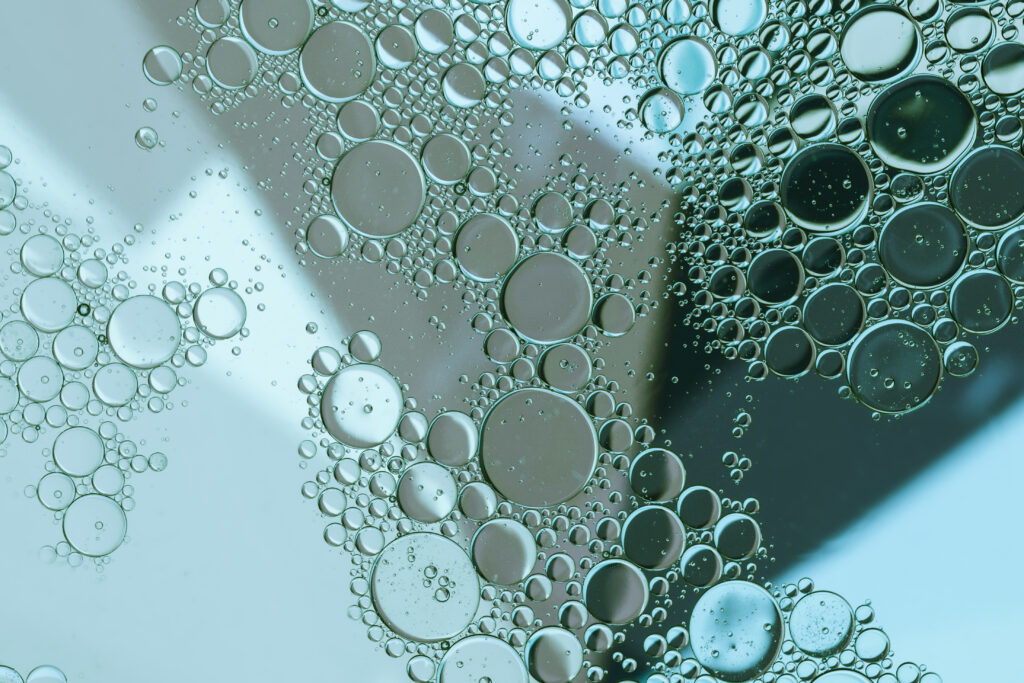Blog
The science behind enzymatic cleaning: Why does it work so well?
“Enzymatic cleaning is rapidly gaining ground in the world of cleaning products, and for good reason. The powerful action of enzymes makes it possible to effectively eliminate odors and dirt without the need for aggressive chemicals. But what makes enzymes so special, and why are they such an essential part of modern cleaning solutions? This article delves deeper into the science behind enzymatic cleaning and provides insights into its benefits and applications. We discuss how enzymes work, the advantages they offer for both the environment and the user, and how this technology helps us in the fight against stubborn dirt.
What are enzymes?
Enzymes are not only important in the cleaning industry; they also play a crucial role in various other sectors, such as the food industry, biotechnology, and medicine. This demonstrates how versatile and essential enzymes are in our daily lives. For example, in the food industry, enzymes are used to improve the texture of products and extend their shelf life. This once again emphasizes the value of enzymes in various applications.
Enzymes are natural proteins that accelerate chemical reactions. In cleaning products, specific enzymes are used that are tailored to break down certain types of dirt and odors. Think, for example, of fat, urine, tobacco smells, or food residues. Thanks to their precision, enzymes address the source of contamination rather than merely masking it. It is fascinating to understand that there are different types of enzymes, each with a unique function. Amylases, for instance, break down starch, while proteases break down proteins. This makes enzymatic cleaning particularly effective, as it allows for targeted action on specific contaminants.
This brings us to an important aspect of enzymatic products: their effectiveness. Studies have shown that enzymatic cleaning products often outperform traditional chemical-based cleaners. This is because enzymes specifically target the breakdown of dirt at a molecular level, resulting in a deeper clean. This is not only beneficial for effectiveness but also for the environment, as fewer chemicals are needed, leading to less harmful waste.
How do enzymes work in cleaning products?
When enzymatic cleaning products, such as ours, come into contact with dirt or odors, the enzymes begin breaking down the molecules responsible for them. This process works as follows: First, enzymes recognize the specific molecules, such as fat or odor sources. Then, they attach themselves to these molecules and initiate a chemical reaction. During this reaction, the molecules are transformed into smaller, harmless components such as water and carbon dioxide. This means that not only are the odor or dirt removed, but they are also safely broken down, contributing to a cleaner and healthier environment.
- Recognition: Enzymes “identify” specific molecules, such as fat or odor sources.
- Binding: They attach themselves to these molecules and initiate a chemical reaction.
- Breakdown: During this reaction, the molecules are transformed into smaller, harmless components such as water and carbon dioxide.
These processes make enzymatic cleaning both effective and environmentally friendly.
Why choose enzymatic cleaning?
The benefits of enzymes are impressive. They not only provide a thorough and effective cleaning but also offer an environmentally friendly approach. Instead of simply removing surface dirt, enzymes tackle the root of the problem. Odors are not masked but permanently eliminated. This is especially important in homes with pets, where persistent odors can be a challenge. By using enzymes, you ensure that your environment remains both clean and fresh.
It is also important to mention that enzymes can remain active at various temperatures and pH levels. This means that enzymatic products are versatile and can be used in different environments, from household cleaning to industrial applications. The fact that enzymes remain effective at lower temperatures also means that you can save energy when doing laundry or cleaning, which is an added benefit for both the environment and your wallet.
Enzymatic products are also an excellent choice for people with allergies or sensitive skin. Since they are free from harsh chemicals, they reduce the risk of irritations. This makes enzymatic cleaning a safe option for families with young children or pets. Choosing enzymatic products is not just a matter of effectiveness but also one of health and well-being.
The benefits of enzymes are impressive:
- Thorough and effective: Instead of removing surface dirt, enzymes tackle the root of the problem. Odors are not masked but permanently eliminated.
- Environmentally friendly: Since enzymes are natural substances, they contribute to safe and ecological cleaning without leaving harmful residues behind.
- Versatile: Suitable for a wide range of applications, from household use to professional cleaning.
Our enzymatic products in the spotlight
- Ecodor EcoClean: A powerful all-purpose cleaner that effortlessly removes grease and dirt thanks to enzymes. Ideal for water-resistant surfaces such as countertops, tables, and tiles.
- Ecodor UF2000: Specifically designed to completely eliminate urine odours. Perfect for use in households with pets or in professional environments.
- Ecodor EcoSmoke: An innovative solution for stubborn smoke and tobacco odors, where enzymes break down odour sources to ensure a long-lasting fresh living environment.
The future of cleaning
Curious about how enzymatic cleaning can enhance your cleaning routine? Explore our full range and experience the power of enzymes for yourself.
What do you think about enzymatic cleaning? Have you already tried enzymatic products? We encourage you to give it a try and discover how they can enhance your cleaning routine. It’s time to embrace the power of enzymes and take a step toward a cleaner and healthier environment.
Take a look at our website and explore our full range, including detailed information about each product. Be amazed by the effectiveness of enzymatic cleaning and make the switch today for a cleaner world.


